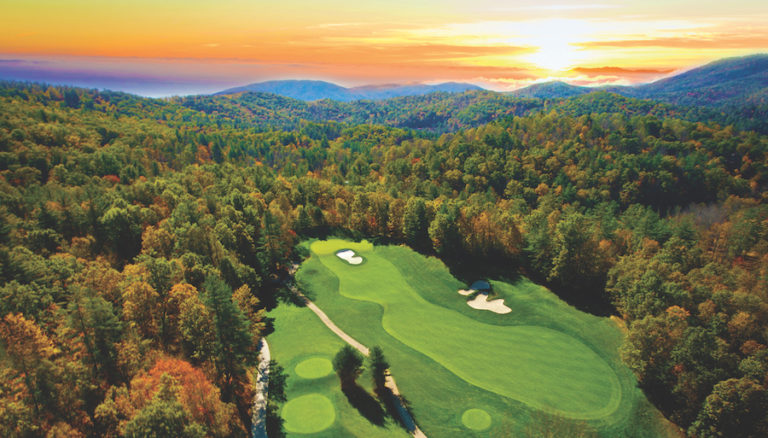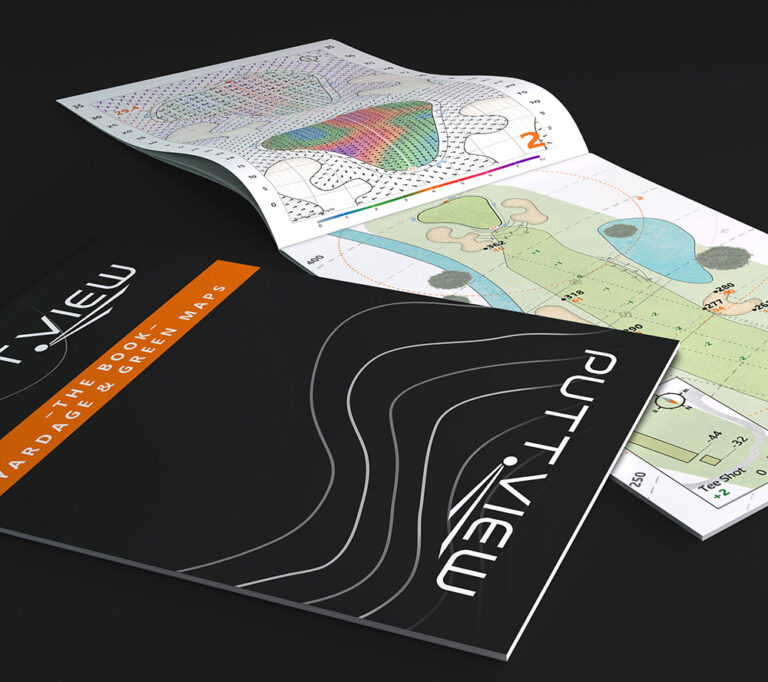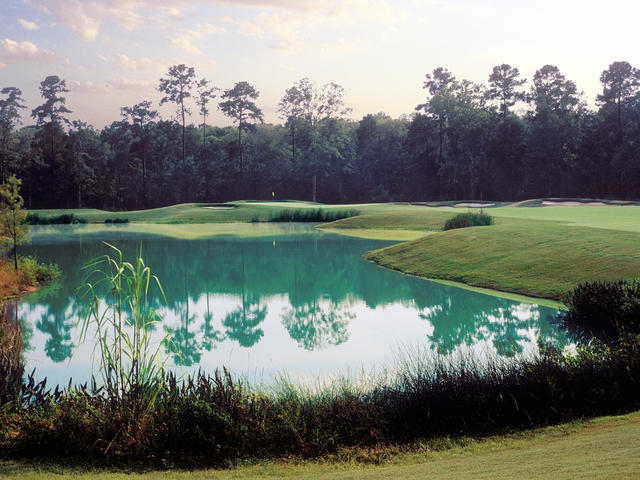Carter Plantation, The Island GC make for Southern-style challenges
Moving northwest away from the lights, sounds and attractions of New Orleans the vibrant swampland takes over as the most prevalent feature of eastern Louisiana. Miles and miles of low-slung bridges, seemingly just a few feet above the brackish water, sprawl out, broken up occasionally by small towns or bedroom communities for the area’s larger cities.
It is here that two of the state’s 17-course Audubon Golf Trail beckons players in search of challenges and memories. This is golf Southern style, with moss-draped live oaks and upland pine forests festooning layouts as flat as the top of a desk.
The Audubon Golf Trail was named for naturalist/artist John James Audubon who, drawn by the natural beauty of the Pelican State, painted a number of his famous bird studies. All the courses on the trail are members of the Audubon Cooperative Sanctuary, a program dedicated to protecting the environment and preserving golf’s natural heritage.
Among the trail’s offerings are Carter Plantation in Springfield (nearly equidistant between Baton Rouge and New Orleans) and The Island Country Club in Plaquemine, an ancient town on the banks of the mighty Mississippi River.
Both venues epitomize the Louisiana golf experience, but in different ways.
Toms Gets it right at Carter Plantation
From New Orleans, the trip to Springfield and Carter Plantation is taken over the 24-mile-long Lake Pontchartrain Bridge. Occupying land originally deeded as part of an 1804 Spanish land grant and at one time a working plantation, the track is the centerpiece of a 700-acre development. As with virtually everything in Louisiana, the community gives a nod to the past, as there is a cemetery on the property that residents say is still “active.”
PGA champion and LSU alum David Toms (along with big help from master-shaper Glenn Hickey) literally got down in the dirt to find the course that became Carter Plantation.
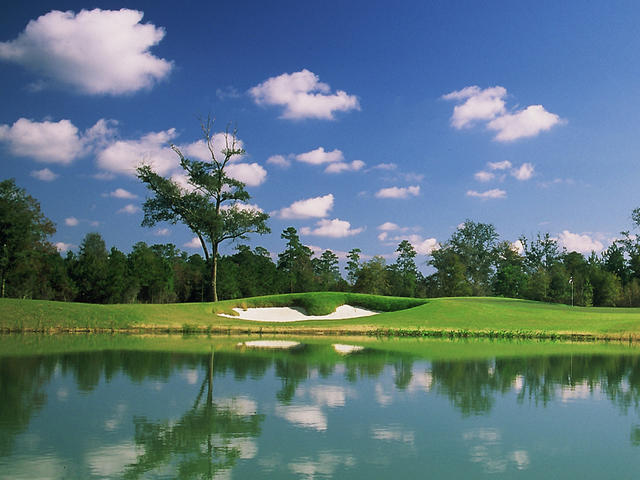
Toms and Hickey moved more than 600,000 cubic yards of dark, rich soil to get the elevation changes for the course, but there are no rolling hills or huge drop-offs at Carter Plantation.
Opened in 2003, the 7,050-yard layout is routed through three distinct Louisiana landscapes: live oaks, cypress wetlands and forests of upland pine and tupelo gum trees. Even with all the earth-moving, great effort was made to preserve the plantation’s native wildlife habitats.
Complicating the equation are 86 bunkers. Water, in the form of lakes and ponds fed by the Blood River, enters play on 11 holes. But sand and water aren’t what makes the course demanding.
Instead, Carter Plantation mirrors the straightforwardness and grit of its designer, rarely giving any quarter. “Our goal from Day 1 was to create a course that would be enjoyable and memorable for all players,” Toms said. “We were given the resources to build the best course we could.”
One of the most interesting things about the design and construction of Carter Plantation is that Toms and Hickey totally improvised the routing and details of each hole. They built the course without any formal plans or blueprints, relying instead on Hickey’s uncanny feel from atop a bulldozer and Toms’ knowledge of the demands, angles and strategies he’s gleaned from playing the game at the highest level.
“I spent a lot of time on the site compared to most Tour players who do design work,” Toms said. “I’ve been there many, many, many times. I know every curve of every hole, every bunker and every slope on every green. I am very happy at the way the course turned out and even more pleased about how it has matured.”
Don’t play Carter Plantation expecting to be in hilly terrain, though some of the tees and greens do rise considerably above the flatlands, lending quite a bit of topographical variety.
There are a number of noteworthy tests at Carter Plantation, which features an excellent collection of par-3s. The 179-yard third is a pretty one-shotter across a marshy area to a two-tiered, elevated green. Both the 187-yard fifth and the cape-style, 186-yard 17th are par-3s played over water, while the 207-yard 12th rises to a round, bunkerless green.
The 430-yard par-4 eighth is likely the best hole at Carter Plantation, doglegging right around a bunker and trees. There is a hidden pond on the other side of the trees, and the water cuts into the fairway. The green slopes from the middle to the front and falls off to the right to the aforementioned pond.
The par-5s are all PGA Tour-quality, three of them stretching 550 yards or more from the tips. The mammoth 13th plays 608 yards and ends with a green surrounded by water and bunkers.
The reachable par-4 14th rewards the prudent. This uphill 330-yarder is splashed with three cavernous bunkers – and, curiously, one small pot bunker next to the putting surface – and finishes with a sloping, treacherous green. Toms and Hickey designed the 14th on a napkin while talking one night. “It’s a great little hole,” Toms said.
The biggest challenge at Carter Plantation is likely found on its greens, which are full of movement and require precise approaches to the proper level. Nearly every putting surface has a significant degree of slope and undulation, and they frequently fall off dramatically to collection areas or hazards.
A double-ended driving range, three practice greens, and practice bunkers are additional features of the course.
Toms’ signature design was named among the “Top 10 Courses You Can Play” in Louisiana by Golf Magazine in 2003. “It’s very gratifying to know and a testament to the property to be ranked ahead of so many great courses,” Toms said.
There’s not much else to do in Springfield but play golf, and that’s okay as Carter Plantation isn’t just a golf community. It’s a full-service golf resort, with refined accommodations and a wonderful restaurant.
Forty-two spacious rooms and suites situated in six separate villas provide the perfect overnight accommodations for Carter Plantation guests and are are a short walk from the clubhouse.
Wind & water rule at The Island CC
A trip to the past is even more in vogue when the player moves west and south beyond Baton Rouge to Plaquemine, home of The Island County Club and its surrounding neighborhood. Just 14 miles from the state capital’s downtown and across the big bridge, The Island was selected as one the inaugural members of the Audubon Golf Trail.
Carved from a sugarcane plantation that has been owned by the Wilbert family for more than 150 years, The Island is so called because 17 of its 18 holes are surrounded by the waters of Bayou Plaquemine and Bayou Jacob. Sugarcane still grows in the field next to course, and the isolation here is only threatened rarely by the sound of a passing train or the whistle of a barge working the Mississippi just beyond the horizon.
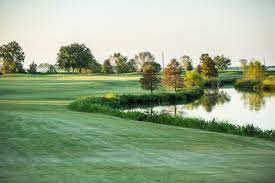
Designed by Mike Young (who also designed Alexandria’s Links on the Bayou and Long Shadow in Madison, Ga., among scores of others), The Island plays to a par of 72 and reaches to just under 7,000 yards from the tips. It is mostly flat, as one would expect from the ground Young was given, but the encroachment of water on all but one hole and relentless winds give the course plenty of moxie.
The Island’s par-4s provide the meat of its experience. The opener stretches 434 yards into the prevailing wind before doglegging left between aqueous hazards. The 441-yard 11th is the most difficult driving hole on the course, a tough two-shotter with out-of-bounds left and water right from tee to green. And the 430-yard 17th has a deep bunker in mid-fairway before ending at the smallest putting surface at The Island, a completely round green just 24 yards deep.
Players are likely to remember two of The Island’s par-5s. The 551-yard second is a bear for the mid-handicapper, crossing water twice before skirting a wetlands and finishing at a diminutive, hard-to-hold putting surface.
The closing hole, a right-leaning 542-yarder three-shotter that plays slightly uphill and into the wind, bears water and a massive waste bunker on the right of the tee-shot landing area. A pond pinches the lay-up area, and the rolling green, at 46 yards from front to back, is the deepest on the course.
The Island has been recognized as a demanding test of golf and an unspoiled destination for a quiet retreat or corporate outing. The track has been featured on the Golf Channel and in Golf Magazine.
The surrounding residential community features relaxed Louisiana-style living with such amenities as a pool, tennis complex and exercise center. The Island’s celebrated Cajun cuisine from its kitchen led to a No.1 ranking among restaurants on the Audubon Trail in 2008.
Off the course in Plaquemine
After a round at The Island, golfers are recommended to head a few miles south to spend an evening and stay overnight at Nottoway, the South’s largest remaining antebellum mansion.
With its immense configuration, hand-carved marble mantles and intricate plaster frieze work, Nottoway’s grandeur leaves visitors awestruck. The 64-room, three-story mansion is sometimes referred to as an “American castle.”

Designed by renowned New Orleans architect Henry Howard, Nottoway was completed in 1859 and boasts a main house in Greek revival and Italianate style of more than 53,000 square feet. The site originally contained 400 acres of highlands and 620 acres of swamp.
Nottoway survived the Civil War, a variety of owners and disrepair to become one of the most visited plantations in the South. Nottoway recently completed a multi-million-dollar renovation that restored the historic facility to her days of glory as well as adding luxury amenities and corporate and social event venues.


